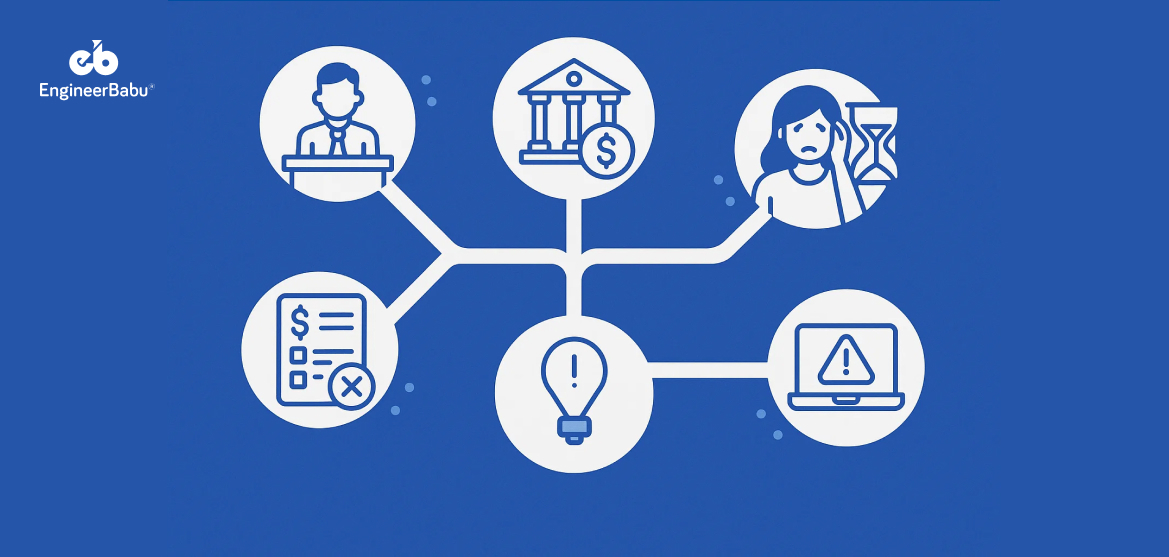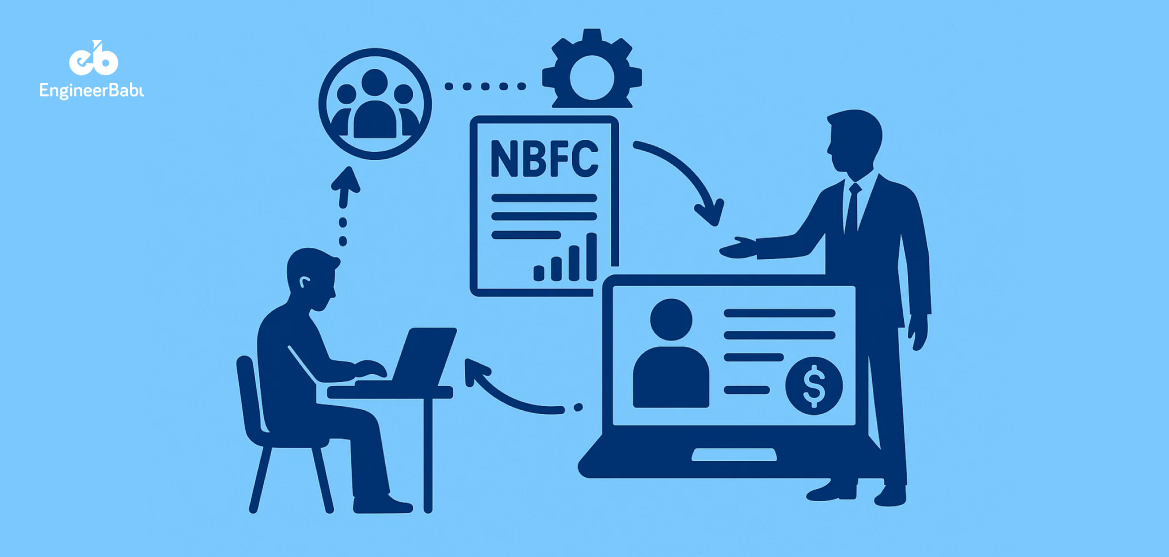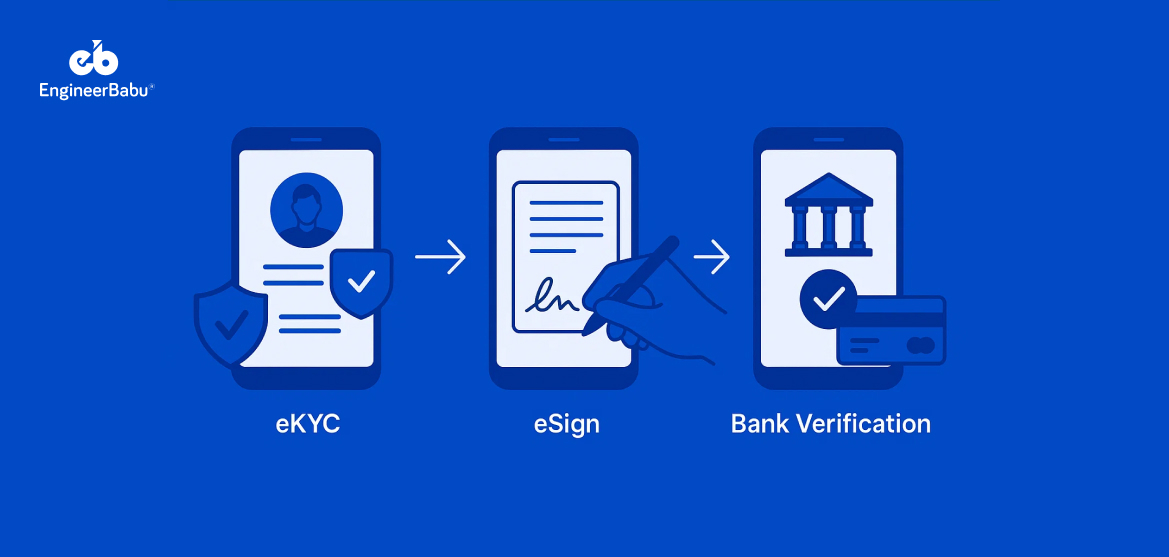Branch-based lending still dominates in India, but it comes with friction that customers and staff constantly struggle with. According to RBI data, almost 60 percent of retail loan customers still depend on physical branches for applications and servicing, which means banks and NBFCs handle massive volumes of manual work every single day.
This model has served the industry for decades, but as customer expectations shift toward speed and convenience, its limitations are becoming more visible. Delayed verifications, misplaced documents, long queues, inconsistent underwriting, and fragmented data often lead to higher turnaround times and rising operational costs.
Before lenders can modernize or automate, they need clarity on what’s actually slowing them down. This blog breaks down the most common pain points in branch-based loan operations and why they’re holding back both efficiency and customer experience.
Key Pain Points in Branch-Based Loan Operations
1. Manual Paperwork and Documentation Delays
Paper-heavy workflows slow down branch operations because every form, KYC document, and income proof must be checked, stored, and moved manually. Files often travel between desks for signatures or approvals, and small issues like missing pages or incorrect entries push applications back. With multiple handoffs, documents get misplaced or delayed, increasing TAT and frustrating customers who must revisit the branch just to correct basic information.
How lenders can solve this
- Shift to digital forms to eliminate manual data entry.
- Allow customers to upload documents through a secure online or app flow.
- Use OCR-based data extraction to reduce errors and rework.
- Implement a centralized digital document repository so files don’t move branch to branch.
- Use checklists to ensure documents are complete before processing begins.
Also read: Loan Management Software Development Guide
2. Slow Customer Onboarding and Verification
Customer onboarding moves slowly in branches because every verification step relies on manual work. Officers check IDs, validate addresses by phone, review income proofs, and enter the same details into multiple systems. Even minor issues like an unclear Aadhaar copy or a name mismatch force customers to return, delaying approvals by a day or more. In high-volume branches, these bottlenecks compound quickly and stretch TAT.
How lenders can solve this
- Use eKYC to verify Aadhaar, PAN, and address instantly.
- Enable digital document uploads so customers don’t depend on photocopies.
- Integrate fintech APIs for income verification instead of manual employer calls.
- Create a unified onboarding workflow so every officer follows the same steps.
- Automate data entry by scanning and extracting information from uploaded documents.
3. Limited Visibility Into Borrower Profiles
Branch teams often work with fragmented or outdated borrower data. Credit history, past interactions, repayment behaviour, and previous loan applications may sit in different systems or even different branches. This forces officers to rely on incomplete information while assessing an applicant.
It also slows down decision-making because staff must manually request files, check multiple dashboards, or call other branches to verify details. The lack of a unified borrower view increases errors and makes underwriting less accurate.
How lenders can solve this
- Build a single customer profile that pulls data from all branches and systems.
- Integrate credit bureau APIs for real-time credit history.
- Use dashboards that show all past loans, repayments, and interactions in one place.
- Sync branch data to a centralized LMS so officers always work with the latest information.
- Automate alerts for discrepancies or missing borrower details.
4. High Operational Costs
Branch-based lending carries heavy operating expenses because so much work depends on people, physical infrastructure, and manual processes. Staff handle repetitive tasks such as data entry, document checks, follow-up calls, and file movement. Branches also spend on storage, printing, courier services, and logistics for physical verifications. As volumes grow, lenders end up hiring more staff instead of improving efficiency, which increases cost per loan and reduces margins.
How lenders can solve this
- Automate repetitive tasks like data entry, identity checks, and document verification.
- Move to digital document storage to eliminate printing and physical archiving.
- Use workflow automation to reduce dependency on manual follow-ups.
- Enable digital field verification to cut down on travel and courier costs.
- Shift low-value tasks to self-service customer portals to reduce branch load.
5. Risk of Fraud and Misreporting
Branches deal with risks such as forged documents, inflated income proofs, and identity manipulation. Field agents may rely on verbal confirmations or physical copies that are easy to tamper with. In some cases, gaps in oversight allow misreporting or collusion, especially when verification steps are done offline without digital trails.
How lenders can solve this
- Use real-time Aadhaar, PAN, and bank statement APIs to validate identities and income.
- Implement fraud detection tools that flag inconsistencies automatically.
- Use geo-tagged and time-stamped field verification through mobile apps.
- Create digital audit trails for every approval step.
- Restrict manual overrides unless supported by documented reasons.
6. Inefficient Loan Underwriting
Underwriting slows down when officers rely on manual judgement or scattered documents. Files move back and forth for clarifications, and underwriting quality varies based on the officer’s experience. Without standardized scoring models, decisions become inconsistent and difficult to scale across branches.
How lenders can solve this
- Use automated credit scoring models for initial eligibility checks.
- Offer underwriters a unified dashboard with all documents, bureau data, and customer details.
- Standardize rules and risk thresholds to reduce subjective decisions.
- Enable digital workflows so underwriters don’t depend on physical files.
- Allow conditional approvals that trigger only when key requirements are met.
7. Dependency on Physical Branch Visits
Borrowers often need to visit the branch multiple times for forms, signatures, or document submissions. This causes drop-offs, especially for working professionals or applicants living far from the branch. Limited operating hours also restrict convenience and lead to slower loan closures.
How lenders can solve this
- Enable complete digital onboarding with eKYC, eSign, and online document uploads.
- Offer doorstep KYC or video KYC for customers who prefer assisted journeys.
- Use digital channels to share updates, collect missing documents, and complete post-approval steps.
- Allow applicants to track loan status in real time through an app or portal.
8. Compliance Challenges
Manual documentation and inconsistent verification create compliance gaps during audits. Missing signatures, incomplete KYC, outdated forms, or untraceable document versions increase the risk of penalties and regulatory issues.
How lenders can solve this
- Automate compliance checks within the workflow.
- Use digital KYC and standardized onboarding templates for all branches.
- Maintain tamper-proof audit logs for every file update.
- Auto-validate documents for expiry, format, and completeness.
- Provide branch teams with real-time compliance alerts.
9. Communication Gaps Between Teams
Branches, field agents, and central operations often operate in silos. Updates shared through WhatsApp, calls, or emails get missed, leading to repeated follow-ups, slow approvals, and confused customers. Lack of real-time visibility makes it hard to track who is responsible for each step.
How lenders can solve this
- Use a centralized workflow system where all teams can view loan status.
- Assign clear task ownership within the LMS.
- Use automated notifications for approvals, rejections, and pending items.
- Allow field officers to upload updates instantly through a mobile app.
10. Limited Scalability
Branch-led operations scale slowly because expansion depends on opening new locations, hiring more staff, and repeating the same manual processes. This makes it costly to enter new markets or handle high loan volumes quickly.
How lenders can solve this
- Use digital onboarding to serve customers beyond branch locations.
- Scale underwriting capacity with automated scoring and rule engines.
- Digitize storage, verification, and workflows to reduce dependency on physical infrastructure.
- Enable hybrid models that combine branch support with digital journeys.
Conclusion
Branch-based lending still forms the backbone of retail credit in many regions, but its traditional workflows weren’t designed for the speed, scale, and expectations of today’s borrowers. Manual checks, paperwork, fragmented systems, and inconsistent processes create operational friction that slows down both staff and customers.
The good news is that these challenges aren’t permanent. With digital onboarding, automated verification, centralized data, and smarter workflows, lenders can modernize branch operations without replacing them entirely.
A hybrid model where branches focus on customer support while digital systems handle the heavy lifting delivers faster approvals, lower costs, and a far better lending experience.
FAQs
1. Why do branch-based loan operations take longer than digital processes?
Because most steps involve manual work such as document collection, data entry, physical verification, and approvals that move from desk to desk. Digital workflows automate these steps and reduce dependency on staff availability.
2. How can lenders reduce paperwork without completely going digital?
They can start with partial digitization like online document uploads, eKYC, and digital checklists. Even small changes remove repetitive manual tasks and reduce customer revisits.
3. What role does automation play in reducing branch operational costs?
Automation minimizes repetitive tasks like data entry, ID checks, income verification, and follow-up reminders. This frees staff to focus on customer service and reduces the need for additional hires as volumes grow.
4. How does a centralized LMS improve branch productivity?
A single system gives all teams real-time access to borrower data, documents, and loan status. This eliminates back-and-forth communication, reduces errors, and speeds up underwriting and approvals.
5. Can branch-based lending become as fast as digital lending?
Yes, when supported by technology. With eKYC, automated underwriting, digital document management, and unified workflows, branch-led operations can achieve near-instant verification and significantly faster TAT while maintaining personal customer support.




